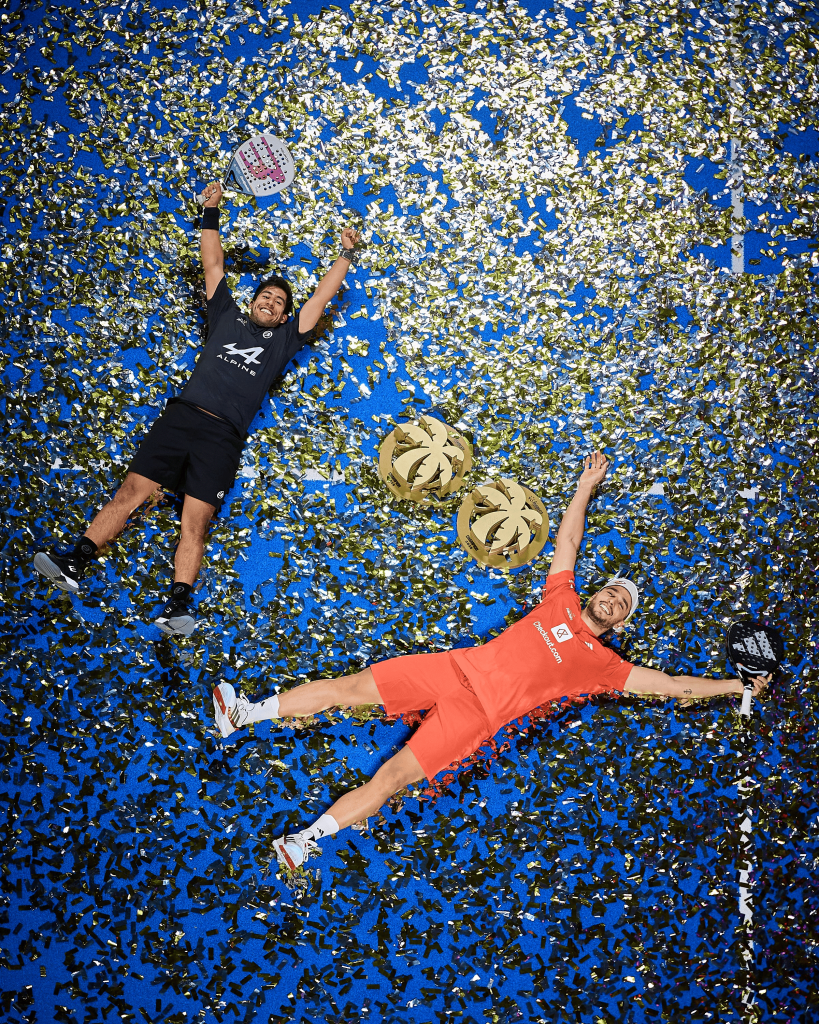[:es]Tras las navidades y después de los periodos de inactividad es conveniente concienciarse y analizar bien qué hacer para realizar una buena pretemporada de pádel con el fin de volver a al nivel optimo de juego, antes de que comience una nueva edición del International Padel Experience by Madison.
La pretemporada es el periodo temporal que transcurre justo antes de la competición y tiene como fin la perfecta preparación del jugador para afrontar todos sus objetivos propuestos durante la temporada. Este periodo es muy importante, ya que los resultados que se cosechen durante el año tendrán mucho que ver con la pretemporada que hayamos llevado a cabo.
Primero hay que marcar los objetivos para la temporada que estará marcada por las fechas de las competiciones que queremos afrontar; después será turno de determinar cual es nuestro nivel de partida; y por último, saber qué cualidades físicas necesitamos como jugadores de pádel: flexibilidad, velocidad, potencia, fuerza o resistencia.
Para ello, dividiremos la preparación en varios bloques de entrenamientos:
- Entrenamientos de resistencia: consiste en poder realizar un esfuerzo durante el máximo tiempo posible. Trabajando la resistencia lograremos aguantar el alto ritmo que conlleva la competición buscando evitar que el cansancio nos pase factura.
- Ejercicios de velocidad: consiste en poder realizar un esfuerzo en el menor tiempo posible. La velocidad nos ayudará a llegar antes a las bolas además de resultarnos más fácil colocarnos en la pista para todo aquel golpe que vayamos a realizar.
- Entrenamientos de coordinación: es la capacidad de poder realizar movimientos ordenados y dirigidos a la obtención de un gesto deportivo. Este tipo de ejercicios nos ayudará en mejorar nuestro juego de pies, algo que resulta muy importante en el pádel.
- Entrenamientos de fuerza: el fortalecimiento de nuestros músculos nos ayudará a prevenir lesiones. Sobre todo conviene trabajar los abdominales ya que la mayoría de los movimientos que hacemos en el pádel hacen uso de ellos.
Si estas a punto de comenzar tu pretemporada de pádel te conviene tener muy presentes estos tres consejos:
- Trabaja primero lo general y luego lo específico. Cuando empieces tu pretemporada procura realizar ejercicios más generales (como carrera continua) y con el paso de los días realiza entrenamientos más específicos (de fuerza, velocidad, etc.)
- Ve de menos a mas. Después de un periodo de inactividad conviene empezar en sesiones muy suaves los primeros días para que, poco a poco, vayamos realizando sesiones más largas y duras.
- Progresa de la cantidad a la calidad. Al comienzo es más usual hacer muchas repeticiones con poca intensidad, pero con el paso de las semanas habrá que reducir el volumen pero aumentar la intensidad de trabajo.
[:en]After Christmas and after periods of inactivity, it is advisable to be well aware of what to do to make a good paddle pre-season in order to return to the optimum level of play, before a new edition of the International Padel Experience by Madison begins.
The preseason is the temporary period that takes place just before the competition and is aimed at the perfect preparation of the player to meet all his objectives proposed during the season. This period is very important, since the results that are harvested during the year will have much to do with the preseason that we have carried out.
First you have to mark the objectives for the season that will be marked by the dates of the competitions that we want to face; Then it will be time to determine what our departure level is; And finally, to know what physical qualities we need as paddle players: flexibility, speed, power, strength or endurance.
To do this, we will divide the preparation into several blocks of training:
- Resistance training: it consists of being able to make an effort for the maximum possible time. Working the resistance we will be able to withstand the high rhythm that the competition entails in order to avoid that fatigue gives us invoice.
- Speed exercises: consists of being able to make an effort in the shortest possible time. The speed will help us get to the balls before it is easier to get on the track for all that blow we are going to make.
- Coordination training: it is the ability to make orderly movements and aimed at obtaining a sports gesture. This type of exercises will help us improve our footwork, which is very important in the paddle.
- Strength training: Strengthening our muscles will help prevent injuries. Above all it is convenient to work the abs since most of the movements that we do in the paddle make use of them.
If you are about to start your paddle preseason you should keep these three tips in mind:
- Work first the general and then the specific. When you start your preseason, try to perform more general exercises (such as a continuous race) and with the passage of the days you do more specific training (strength, speed, etc.)
- Go from less to more. After a period of inactivity, it is advisable to start in very soft sessions the first few days so that, gradually, we are going to make longer and harder sessions.
- Progress from quantity to quality. In the beginning it is more usual to do many repetitions with little intensity, but with the passage of the weeks will have to reduce the volume but increase the intensity of work.
[:]











